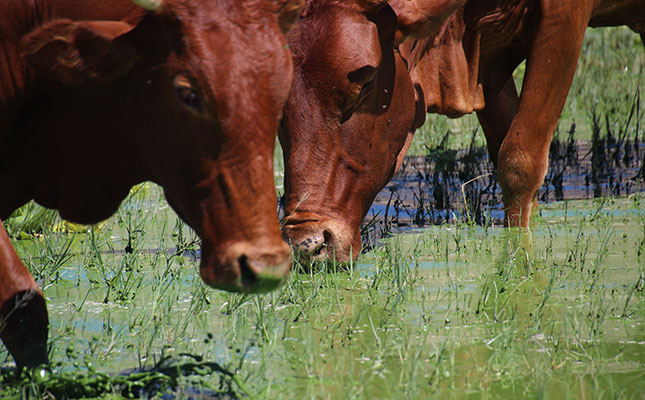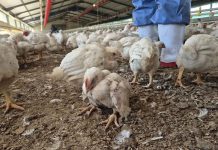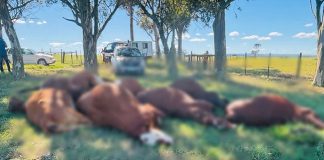
Photo: Jurgens van Loggerenberg
Farmers have been warned to be on the lookout for cyanobacterial blooms in water bodies, which can be lethal for both humans and animals, and are currently very prevalent.
“We have not suffered any major livestock incidents that I am aware of recently, but when animals are affected, losses are usually big as all the animals that drink the water could end up dead,” Prof Christo Botha of the Faculty of Veterinary Science at Onderstepoort told Farmer’s Weekly.
READ A herd health and production management plan
According to CyanoLakes, a company that uses satellite imagery to monitor cyanobacterial blooms, blooms posing a very high health risk had been widely reported in the past week.
The affected dams included the Salt Pans, Darlington and Beervlei dams in the Eastern Cape; Gamkapoort and Stompdrift dams in the Western Cape; Grootvloer and Vanderkloof dams in the Northern Cape; as well as the Klipdrif, Klipvoor, Roodekoppies, Vaalkop and Modimola dams in North West.
In the Free State, the Gariep and Kalkfontein dams were affected, while the Middle Letaba dam in Limpopo, Bronkhorstpruit and Rietvlei dams in Gauteng, and the Pongolapoort Dam in KwaZulu-Natal also reported infestations.
READ Fungal diseases drive up wine grape production costs
Cyanobacteria were found in a wide range of environments, but were generally present below the threshold of concern, according to Plant Poisoning and Mycotoxicosis of Livestock in Southern Africa.
The micro-organisms were only considered a threat during the bloom period, which usually occurred during summer months, and primarily in dams with low and stagnant water levels.
During bloom episodes, the bacteria, depending on the subspecies and environmental conditions, secreted toxic metabolites into the water. These toxins had been found to induce conditions ranging from headaches, vomiting and skin irritation to being associated with Alzheimer’s disease in humans, and lameness and liver damage in livestock.
People and animals could recover without treatment if they ingested low volumes of contaminated water, but no treatment was available for high levels of ingestion.
Jurgens van Loggerenberg, managing director of Water Technovation and director of operations in South Africa for BlueGreen Water Technologies, said the situation had worsened over time, due to climate change, but was primarily the result of water pollution.
“The build-up of artificial fertiliser in combination with poor sanitation, resulting in high levels of sewage running into dams, is creating a nutrient-rich environment for these bacteria to thrive in.”
READ Care and caution keep poultry disease-free
He estimated that about 60% of farm dams in the country were affected by cyanobacteria blooms at one time or another, every year.
He said it was relatively easy to identify cyanobacterial blooms, as the bacteria reproduced quickly during bloom periods and then formed a green, unpleasant smelling scum on the water surface with a sponge-like feel to it, and left a blue-green tinge along the sides of a dam when it dried out.
He advised farmers to move their animals away from water bodies affected by these algal blooms, and seek treatment for dams in which blooms occurred.
“The dams need to be treated, otherwise the bacteria will over-winter and pose a threat the next warm season.”










